It’s been awhile since I’ve been really excited about an audio product. You’d think that with a truly great amplifier as well as a world-class set of speakers on hand that wouldn’t be the case. But this summer, I had some health issues and a war raged, so audio has slipped away, somewhat. So much so that a pair of Great Plains Audio 704 co-axials have been sitting quietly in their cartons with enclosures half-built.
My enthusiasm has been re-lit, thankfully, by a pair of really cheap and simple speakers I built with more-or-less cast-off parts! As you may know, my speaker building is heavily influenced by the designs of Wayne Parham. His high-efficiency two-way designs are at once simple and sophisticated. Simple in construction, sophisticated in the way they unravel the most complex musical passages. Being unable to stick to a recipe, however, none but my initial try at his designs have been “by the book”. I built his Theatre 4’s to the recipe but then decided to try the Studio 2 Pi’s with a sloped baffle. They were followed by more 2 Pi’s with a different tweeter and finally a variation on the 4 Pi Pro that I called “an homage to the Altec Model 19”.
Foreground: Studio 2 Pi’s; Background “Model 19/4Pi’s and Titanic subwoofer
There have also been Bottlehead and Hagerman kits, some in custom cases. None of these, however, has given me the rush of my current speaker built, which I simply call Altec/University 2 ways.
They begin with, as often happens, a visit to the home of Speakerman who maintains a shrine to 60’s and 70’s speakers and electronics under his roof. As he usually does, he made me a loan/gift of some usually obscure but often quite valuable drivers as a parting gift. On this particular occasion the “gift” took the form of some disreputable looking 12” woofers which, according to my host’s encyclopedic knowledge, were OEM drivers that Altec made for University based on the Model 414. It struck me at the time that they would be ideal for a “souped-up” pair of Studio 2 Pi’s with Vifa DX-25 tweeters I also had at home. They resided on a shelf for over a year.
With the Altec co-axials half-built and several other projects parts over-flowing boxes on the floor I was suddenly taken by the need to build a small pair of 2-ways to listen to while I worked. I had several 70’s receivers on hand and even went so far as to haul my body up through the trap door and into the attic to place an FM antenna. No big surprise, the FM project as well as the speakers languished while I listened to and evaluated the KR Audio VA 340 amplifier and XLH 1812 speakers.
I decided to make the Studio speakers a project I could write about so I made them a DIY project for everyman. Instead of cutting the MDF on my table saw, I used the notoriously unsquare panel saw at work – Home Depot. Then I had to decide whether to use screws without clamps as many DIY’r’s must. And you may. But I chose to clamp without any screws ‘cause I hate to fill holes and filler is a needless complication for the average builder. I also tried to use the placement of the clamps to highlight how the out-of-square panels glued up with some edges proud of their adjacent panels. This is really key. If edges protrude they are easily trimmed. Panels that extend farther than edges, however, have to be laboriously sanded flush and then the whole thing is crooked!
Here you can see the corner edge extending just past its neighboring panel which makes the box square. These protruding edges can be quickly trimmed with a hand plane, router with flush trimming bit or sandpaper. If sandpaper is used, it’s crucial to fold it around a hard block of wood, preferably with a cork backing. Using your hand or even one of the rubber blocks they sell at the home center will result in unevenness.
Once again, screws may be substituted for clamps but be careful to fill and sand the holes twice. The first time the filler will dry concave. Unless you use too much which will result in a convexity that will rarely sand flat without creating a valley in the surrounding panel. Filler is tough!
The other main job during glue-up is to create a square box. This is best done by utilizing the bracing. Depending on the size of the box you will have one or more internal braces that should contact all four sides. By cutting the top and bottom pieces to fit inside the front, back and sides you create the opportunity for braces the same size to contribute to the squareness of the cabinet:
I call this a window pane brace and it works really well.
Use it to set your clamps and maintain square:
For those who haven’t spent a lifetime accumulating clamps, it is absolutely true that the packing tape with the threads running through it will exert over 60lbs clamping pressure when wrapped around a cabinet joint. I’ve tried it and it really works.
Which brings us to the subject of glue. I’m certain readers of Dagogo also pay attention to the various forums where the mere mention of glue elicits everyone’s favorite as being “best”. Urethane construction adhesives like PL200 are said to have damping properties but they are really messy. Polyurethane’s like Gorilla Glue are well-liked but even messier and stay on your hands for decades. They also are the devil to get off adjacent surfaces and will take the edge off a chisel or plane in a heartbeat. Very few pro shops use anything but white PVC glue – good old Elmers or Titebond carpenters adhesive. Oh sure, the yellow variety dries faster and is more waterproof. But the faster drying means less time to adjust your clamps. Or take apart a joint and reposition. BTW, always dry fit parts including clamping them before you glue up. Finally, the edges of boards, plywood and MDF will absorb glue more readily than the flat surfaces. Take the time to make a mixture of glue and water 50/50; brush it on the edges and allow to dry. Then glue up normally.
When you’re done and the drivers are installed you’ll have a pair of “uglies” like these:
Notice how the woofer is offset in the cabinet? I’m told there are audio Gremlins called nodes that are made to feel better by having the woofer a different distance from any of the sides .Looks kinda Dynaco A-25’ish, too. And there’s more than just the drivers in here, we also have the crossover and some stuffing. Crossovers are a subject to themselves and I know nothing more than what I’ve learned from Wayne and Speakerman. Check out Wayne’s White Paper, the PiAlign Document and JBL info at www.pispeakers.com. Just as you should tailor the stuffing to the design goals, the crossover needs to be nestled inside the cabinet so, first, the connections won’t come undone and, second, the Mercury Cannon Shots on the 1812 Overture won’t cause vibrations to interfere with the music.
I somehow neglected to take a picture of the rear panel which would show how several tries were made at finding the proper loading of the woofer. With Ron The Speakerman’s help, we tried several port sizes for bass reflex loading and finally settled on a poor man’s aperiodic port which is nothing more than dense foam filling the port. Sort of half way between bass reflex and acoustic suspension. But that was at Speakerman’s house. Back at my place, with suspended floors I found the bass was boomy. Sealing the port made a huge difference. In fact, using the Edward Villchur-inspired sealed loading sounded so good I decided these speaker were too good for just patio duty:
So I veneered them.
Just some ‘flat cut’ un-backed Maple I bought on E-Bay several years ago. Stuck down with contact adhesive.
The leaves were only 8” wide but my supplier does a nice job of trimming the edges so for a casual job like this I simply butted 2 leaves together and used 3M Blue Masking Tape to hold them together while I worked. The Blue tape won’t tear away the wood fibers like regular masking tape. And this is quite different from the complex assembly and trimming required of a veneer job like the quasi-Model 19’s:
Here you see the use of special perforated veneer tape after the 4 separate leaves have been “book-matched” and trimmed with a very sharp plane to butt exactly together.
So now this pair is dressed up and finished with 2 coats of Minwax Wiping Polyurethane. They show real promise driven by the 8 watts of the redesigned Dignity Audio DA-08 300B’s that just arrived, although there is a “hollow, boxy sound”. On Maestro Parham’s advice, I changed the value of the coil on the woofer to .5 mH and the tweeter crossover to first order with 3 cascaded caps summing to 13.2uF for a 3500 Hz cross. Simple. I also increased the Dacron stuffing somewhat to fill the box; but loosely. The “hollow” sound went away.
This pair really met my design goals: cheap, easy to build and relatively efficient. Somewhere around 93dB efficient, which allows them to play loud with just eight 300B watts at 10 o’clock on the volume control. You can find these Altec/ University and Altec/Utah woofers on E-Bay. Or go with Eminence 10” or 12” like the Alpha series. Efficiency is key, though. When you hear a small box like this pour out dynamics the way it does, it’ll be tough to go back to those expensive 5 ½” woofer speakers.
I try to be objective about what I build. I really do. And I have built some truly shitty-sounding speakers. But I have to say that there is something special about the sound of these 2-ways. The treble is as sweet as I have come to expect from this Vifa cloth dome but more extended. More extended than even the twice as expensive Morel I used in the “White” Studios. And possibly the 3dB decrease (is that the right number, Speakerman?) in bass output by sealing the cabinet makes the lower octaves more synergistic with the upper. There is no boom. None. And very little real output below 50Hz. But fingers plucking Double Bass low “E” strings are quite real and drum kits have a truly physical impact. Alison Krause’ voice remains Bluegrass-edgy but not grating. Perhaps the under-damped 300B combined with the under-damped, sealed cabinet as Ron suggested is what’s happening. Whatever “It” is, I am enjoying the music more than I have in some time. And was moved to write this.
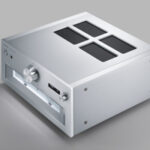
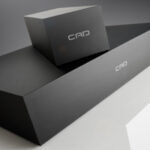

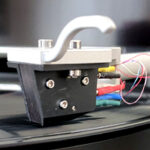


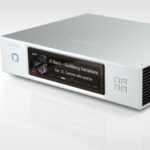
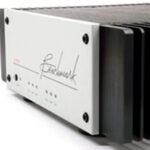


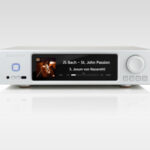
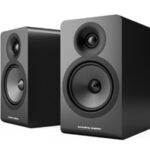
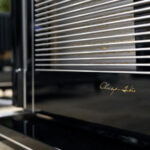

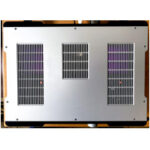

It’s been awhile since I’ve been really excited about an audio product. You’d think that with a truly great amplifier as well as a world-class set of speakers on hand that wouldn’t be the case. But this summer, I had some health issues and a war raged, so audio has slipped away, somewhat. So much so that a pair of Great Plains Audio 704 co-axials have been sitting quietly in their cartons with enclosures half-built.
My enthusiasm has been re-lit, thankfully, by a pair of really cheap and simple speakers I built with more-or-less cast-off parts! As you may know, my speaker building is heavily influenced by the designs of Wayne Parham. His high-efficiency two-way designs are at once simple and sophisticated. Simple in construction, sophisticated in the way they unravel the most complex musical passages. Being unable to stick to a recipe, however, none but my initial try at his designs have been “by the book”. I built his Theatre 4’s to the recipe but then decided to try the Studio 2 Pi’s with a sloped baffle. They were followed by more 2 Pi’s with a different tweeter and finally a variation on the 4 Pi Pro that I called “an homage to the Altec Model 19”.
Foreground: Studio 2 Pi’s; Background “Model 19/4Pi’s and Titanic subwoofer
There have also been Bottlehead and Hagerman kits, some in custom cases. None of these, however, has given me the rush of my current speaker built, which I simply call Altec/University 2 ways.
They begin with, as often happens, a visit to the home of Speakerman who maintains a shrine to 60’s and 70’s speakers and electronics under his roof. As he usually does, he made me a loan/gift of some usually obscure but often quite valuable drivers as a parting gift. On this particular occasion the “gift” took the form of some disreputable looking 12” woofers which, according to my host’s encyclopedic knowledge, were OEM drivers that Altec made for University based on the Model 414. It struck me at the time that they would be ideal for a “souped-up” pair of Studio 2 Pi’s with Vifa DX-25 tweeters I also had at home. They resided on a shelf for over a year.
With the Altec co-axials half-built and several other projects parts over-flowing boxes on the floor I was suddenly taken by the need to build a small pair of 2-ways to listen to while I worked. I had several 70’s receivers on hand and even went so far as to haul my body up through the trap door and into the attic to place an FM antenna. No big surprise, the FM project as well as the speakers languished while I listened to and evaluated the KR Audio VA 340 amplifier and XLH 1812 speakers.
I decided to make the Studio speakers a project I could write about so I made them a DIY project for everyman. Instead of cutting the MDF on my table saw, I used the notoriously unsquare panel saw at work – Home Depot. Then I had to decide whether to use screws without clamps as many DIY’r’s must. And you may. But I chose to clamp without any screws ‘cause I hate to fill holes and filler is a needless complication for the average builder. I also tried to use the placement of the clamps to highlight how the out-of-square panels glued up with some edges proud of their adjacent panels. This is really key. If edges protrude they are easily trimmed. Panels that extend farther than edges, however, have to be laboriously sanded flush and then the whole thing is crooked!
Here you can see the corner edge extending just past its neighboring panel which makes the box square. These protruding edges can be quickly trimmed with a hand plane, router with flush trimming bit or sandpaper. If sandpaper is used, it’s crucial to fold it around a hard block of wood, preferably with a cork backing. Using your hand or even one of the rubber blocks they sell at the home center will result in unevenness.
Once again, screws may be substituted for clamps but be careful to fill and sand the holes twice. The first time the filler will dry concave. Unless you use too much which will result in a convexity that will rarely sand flat without creating a valley in the surrounding panel. Filler is tough!
The other main job during glue-up is to create a square box. This is best done by utilizing the bracing. Depending on the size of the box you will have one or more internal braces that should contact all four sides. By cutting the top and bottom pieces to fit inside the front, back and sides you create the opportunity for braces the same size to contribute to the squareness of the cabinet:
I call this a window pane brace and it works really well.
Use it to set your clamps and maintain square:
For those who haven’t spent a lifetime accumulating clamps, it is absolutely true that the packing tape with the threads running through it will exert over 60lbs clamping pressure when wrapped around a cabinet joint. I’ve tried it and it really works.
Which brings us to the subject of glue. I’m certain readers of Dagogo also pay attention to the various forums where the mere mention of glue elicits everyone’s favorite as being “best”. Urethane construction adhesives like PL200 are said to have damping properties but they are really messy. Polyurethane’s like Gorilla Glue are well-liked but even messier and stay on your hands for decades. They also are the devil to get off adjacent surfaces and will take the edge off a chisel or plane in a heartbeat. Very few pro shops use anything but white PVC glue – good old Elmers or Titebond carpenters adhesive. Oh sure, the yellow variety dries faster and is more waterproof. But the faster drying means less time to adjust your clamps. Or take apart a joint and reposition. BTW, always dry fit parts including clamping them before you glue up. Finally, the edges of boards, plywood and MDF will absorb glue more readily than the flat surfaces. Take the time to make a mixture of glue and water 50/50; brush it on the edges and allow to dry. Then glue up normally.
When you’re done and the drivers are installed you’ll have a pair of “uglies” like these:
Notice how the woofer is offset in the cabinet? I’m told there are audio Gremlins called nodes that are made to feel better by having the woofer a different distance from any of the sides .Looks kinda Dynaco A-25’ish, too. And there’s more than just the drivers in here, we also have the crossover and some stuffing. Crossovers are a subject to themselves and I know nothing more than what I’ve learned from Wayne and Speakerman. Check out Wayne’s White Paper, the PiAlign Document and JBL info at www.pispeakers.com. Just as you should tailor the stuffing to the design goals, the crossover needs to be nestled inside the cabinet so, first, the connections won’t come undone and, second, the Mercury Cannon Shots on the 1812 Overture won’t cause vibrations to interfere with the music.
I somehow neglected to take a picture of the rear panel which would show how several tries were made at finding the proper loading of the woofer. With Ron The Speakerman’s help, we tried several port sizes for bass reflex loading and finally settled on a poor man’s aperiodic port which is nothing more than dense foam filling the port. Sort of half way between bass reflex and acoustic suspension. But that was at Speakerman’s house. Back at my place, with suspended floors I found the bass was boomy. Sealing the port made a huge difference. In fact, using the Edward Villchur-inspired sealed loading sounded so good I decided these speaker were too good for just patio duty:
So I veneered them.
Just some ‘flat cut’ un-backed Maple I bought on E-Bay several years ago. Stuck down with contact adhesive.
The leaves were only 8” wide but my supplier does a nice job of trimming the edges so for a casual job like this I simply butted 2 leaves together and used 3M Blue Masking Tape to hold them together while I worked. The Blue tape won’t tear away the wood fibers like regular masking tape. And this is quite different from the complex assembly and trimming required of a veneer job like the quasi-Model 19’s:
Here you see the use of special perforated veneer tape after the 4 separate leaves have been “book-matched” and trimmed with a very sharp plane to butt exactly together.
So now this pair is dressed up and finished with 2 coats of Minwax Wiping Polyurethane. They show real promise driven by the 8 watts of the redesigned Dignity Audio DA-08 300B’s that just arrived, although there is a “hollow, boxy sound”. On Maestro Parham’s advice, I changed the value of the coil on the woofer to .5 mH and the tweeter crossover to first order with 3 cascaded caps summing to 13.2uF for a 3500 Hz cross. Simple. I also increased the Dacron stuffing somewhat to fill the box; but loosely. The “hollow” sound went away.
This pair really met my design goals: cheap, easy to build and relatively efficient. Somewhere around 93dB efficient, which allows them to play loud with just eight 300B watts at 10 o’clock on the volume control. You can find these Altec/ University and Altec/Utah woofers on E-Bay. Or go with Eminence 10” or 12” like the Alpha series. Efficiency is key, though. When you hear a small box like this pour out dynamics the way it does, it’ll be tough to go back to those expensive 5 ½” woofer speakers.
I try to be objective about what I build. I really do. And I have built some truly shitty-sounding speakers. But I have to say that there is something special about the sound of these 2-ways. The treble is as sweet as I have come to expect from this Vifa cloth dome but more extended. More extended than even the twice as expensive Morel I used in the “White” Studios. And possibly the 3dB decrease (is that the right number, Speakerman?) in bass output by sealing the cabinet makes the lower octaves more synergistic with the upper. There is no boom. None. And very little real output below 50Hz. But fingers plucking Double Bass low “E” strings are quite real and drum kits have a truly physical impact. Alison Krause’ voice remains Bluegrass-edgy but not grating. Perhaps the under-damped 300B combined with the under-damped, sealed cabinet as Ron suggested is what’s happening. Whatever “It” is, I am enjoying the music more than I have in some time. And was moved to write this.